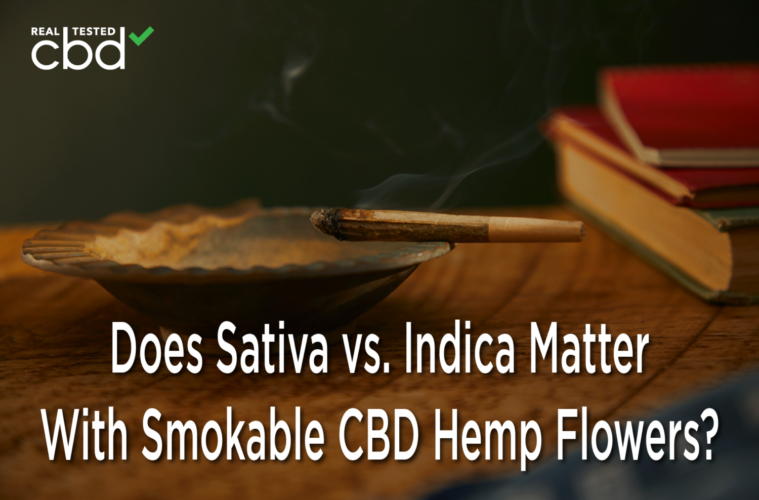This article was originally published on Real Tested CBD. To view the original article, please click here.
Scientists have always enjoyed categorizing things. So, it’s no surprise that once botanists discovered cannabis, they started creating unique terms for these flowers. Most people who know about cannabis cultivation should have heard of the distinction between sativa vs. indica cultivars. Although technically there’s a third “ruderalis” variety of cannabis, most cannabis customers only care about its indica vs. sativa dominance.
However, there are many questions over whether these terms mean anything for smokable hemp. Do CBD-rich hemp cultivars feel or taste any different if they’re sativa vs. indica? If so, what are the primary differences customers should know about?
Refresher Course: What Does “Sativa vs. Indica” Mean?
For those who aren’t familiar with the terms “sativa” and “indica,” here’s a quick overview. Both of these words refer to subspecies within the cannabis genus. Botanists used “sativa” and “indica” to distinguish each cannabis cultivar’s unique growing patterns and evolutionary history.
For countless centuries, sativa strains evolved in hot & humid areas such as Southeast Asia, Jamaica, and Africa. Generally, these strains grow tall and skinny with thin leaves. Sativas also tend to take longer to reach full maturity versus indicas.
By contrast, indica strains were first discovered in mountainous regions in central Asia, especially in the Hindu Kush mountain range. These varieties tend to have a quicker flowering schedule and a shorter, “bush-like” appearance.
Recently, cannabis smokers claimed that sativas and indicas have unique chemical properties that produce distinct physiological effects. Typically, sativa-forward strains gave users a “heady” high with sensations like euphoria and increased stamina. Indicas, however, became associated with deep sedation and relaxation.
Does “Indica vs. Sativa” Carry Over Into Hemp Flowers?
Now that smokable hemp flowers have become a big deal, more shops offer “indica” or “sativa” strains to their customers. Many people claim CBD-rich cultivars have similar flavor profiles associated with their marijuana equivalents. Some customers also say CBD hemp flowers with a sativa edge are better for daytime use, while those in the indica category can make users sleepy.
In truth, there’s no evidence to suggest a massive discrepancy in effects between indica or sativa hemp flowers. Since CBD is non-psychoactive, it doesn’t affect the endocannabinoid system as much as THC. Some researchers even argue the sativa vs. indica distinction is too imprecise to determine a cultivar’s effects — especially as hybrid strains become more common.
Everyone reacts to cannabinoids and terpenes in unique ways, so a sedating strain for one person may make another person feel alert. Also, some research suggests your dose of CBD has a significant impact on its effects. Generally, the more CBD you take, the more likely you will feel sleepy.
While the indica vs. sativa distinction isn’t useless, it’s not the optimal way to gauge a CBD hemp strain’s effects. Customers who want a true “preview” of a hemp joint should look at third-party lab results to see all the secondary cannabinoids and terpenes in their strain. Prospective hemp smokers should also read reviews of various CBD strains on reputable hemp forums to get a sense of smokers’ average experiences.
Need Help Finding Hot Hemp Hybrids? Read Through Real Tested CBD!
Please remember that Real Tested CBD now offers unbiased reviews of hemp flowers and pre-rolls. You could even find dozens of reports on the hottest CBD and delta-8 e-juices on our website. So, if you’re struggling to figure out which hemp brand is selling the best legal buds, you should scan through Real Tested CBD’s reviews.
Advertising disclosure: We may receive compensation for some of the links in our stories. Thank you for supporting Irvine Weekly and our advertisers.


